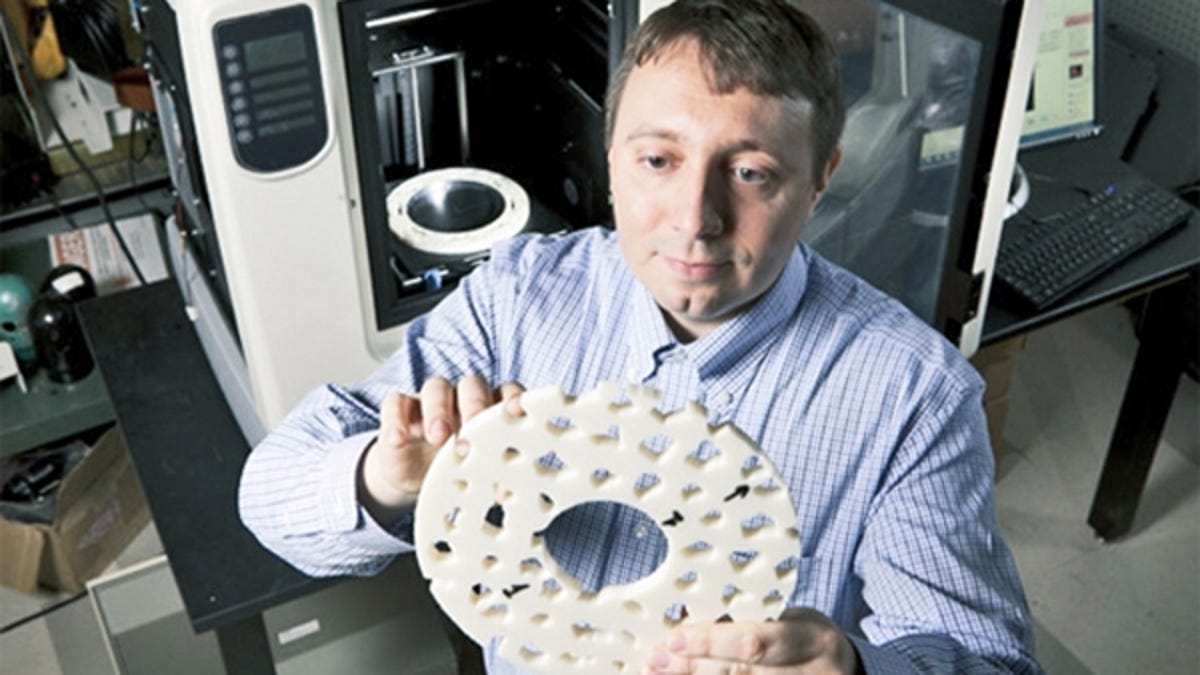3D print your own invisibility cloak, kind of
Engineers at Duke University, North Carolina, have used 3D printing to create an object that can shield against detection from microwave beams.

Yaroslav Urzhumov and the "cloak".
(Credit: Duke University)
Engineers at Duke University, North Carolina, have used 3D printing to create an object that can shield against detection from microwave beams.
While we remain dubious about the legitimacy of using the word "invisible" when visible light isn't involved, that's what a team of engineers at Duke University have dubbed their creations. Seven years ago, they demonstrated their first "invisibility cloak" in a laboratory; now, thanks to 3D printing, the fabrication process is a lot more accessible.
The object — which looks more like a Frisbee made of Swiss cheese than a wearable cape a la Harry Potter — has a large hole in the centre, with seemingly random holes in the disc. The size, shape and placement of these holes have actually been determined using algorithms to disguise any object placed in the centre hole from microwave beams aimed through the side of the disc, making it appear as though it isn't there.
"The design of the cloak eliminates the 'shadow' that would be cast, and suppresses the scattering from the object that would be expected," said Yaroslav Urzhumov, assistant research professor in electrical and computer engineering at Duke Pratt School of Engineering. "In effect, the bright, highly reflective object, like a metal cylinder, is made invisible. The microwaves are carefully guided by a thin dielectric shell and then re-radiated back into free space on the shadow side of the cloak."
It doesn't seem particularly useful in this form, but the team believes that it is only the beginning, and this unassuming-looking object has great potential. According to Urzhumov, the technology could be used to create a polymer-based cloaking layer just 1 inch thick, wrapped around a much larger object — and that, eventually, they'll be able to create a material that will operate in higher wavelengths, including the visible light spectrum.
"We believe this approach is a way towards optical cloaking, including visible and infrared," he said. "And nanotechnology is available to make these cloaks from transparent polymers or glass. The properties of transparent polymers and glasses are not that different from what we have in our polymer at microwave frequencies."
Meanwhile, Urzhumov believes that anyone with access to a 3D printer has the ability to create something similar at home.
The full results of the team's experiments can be read under the title "Thin low-loss dielectric coatings for free-space cloaking" in the journal Optics Letters.

